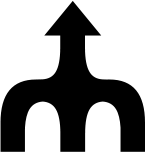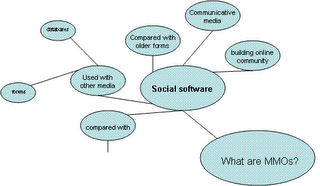
I have ten bloggers that I follow. To me, they are the future of librarianship. Their blogs are not just random musings, but instead are thoughtful, reflective, and fresh in content. In my opinion, these blogging librarians represent the next generation of the profession: they are creative, technologically savvy, and passionate about what they do. You can easily tell that they do this truly because they love it.
(10)
Blog on the Side - Darlene Fichter, Data Library Coordinator at the University of Saskatchewan, never fails to offer fascinating insight into the technological side of the information profession. Each post offers a little something different. Hence, it makes my top 10.
(9)
McMaster University Library - This one's kind of unfair. A university librarian shouldn't be ranked so highly. (Doesn't he better things to do?) And that's absolutely why Jeffrey Trzeciak offers such an exciting blog. He gives us a glimpse of the inner workings of a university librarian's viewpoint. Indeed, there is management-speak, but underneath the marketing and formality, is hidden a fabulous hub of fascinating ideas and fabulous vision of Library 2.0.
(8)
Michael Habib - I'm just astounded at how far Mr. Habib will go. The sky's the limit for this man. And he's only just finished his MLS a few months ago. I consider Habib to be one of the foremost experts of
Library 2.0 theory, as he wrote his dissertation on it.
(7)
Library Crunch - Michael Casey's blog about Library 2.0-related issues in LIS. Casey is the progenitor of the the term "Library 2.0" and not surprisingly, his blog offers the most innovative insights into the profession.
(6)
davidrothmman.net - Very highly technology-charged blog with superb insight into the latest medical library-related happenings.
(5)
Vancouver Law Librarian - Humorous and enlightening, he offers more of a tech-related posts in the legal information profession.
(4)
Meredith Farkas - One of the up-and-coming stars in the library world, Meredith has already published articles, contributes frequently to the blogosphere with thoughtful analysis, and even built the inaugural Five Weeks to a Social Library free online course for working librarians.
(3)
Krafty Librarian - Michelle Kraft is in my mind, one of the top health librarians in the field, and her blog posts indicate her knowledge and passion for her profession. She is also very updated on the technology side of her area of librarianship, which is a challenge, since hospital libraries are not often the most receptive places for technology due to data privacy.
(2)
The Google Scholar Blog - This one's definitely a biased decision; but one which I don't think is overly so. I am confident that many will agree with me that the information in this blog not only serves the medical community, but the information profession. The Google Scholar is on sabbatical on the moment, but his year of material is worth the price of admission alone.
(1)
Tame the Web - I rank according to the following criteria: visually creative inteface; length of existence; originality of posts; and quantity/quality of feedback. Michael Stephens, a professor and professional librarian, has a blog that meets all of these criteria. It's definitely worth checking out.
I believe blogging is a new beginning for librarians; whereas in the past, discourse was confined to monthly journal articles, which could only draw response sporadically through conferences and workshops and the occasional phonecall, the blogosphere has transformed and leveled the playing field. Librarians are actually ahead of the game now; we can exchange our views within seconds. I'm proud to be apart of this profession, and excited about where it's going.
 Paul Miller has written an interesting article on creating mashups for a library contest. A total of eighteen entries were received for the competition, spanning everything from very simple enhancements to existing library functions right through to a collaborative effort to provide library services inside the Second Life 3D online digital world. Entries came in from public and academic libraries, as well as from the commercial sector. As is the trend with Mashups more generally, map-based Mashups proved common.It's a fun read! Here's an excerpt:
Paul Miller has written an interesting article on creating mashups for a library contest. A total of eighteen entries were received for the competition, spanning everything from very simple enhancements to existing library functions right through to a collaborative effort to provide library services inside the Second Life 3D online digital world. Entries came in from public and academic libraries, as well as from the commercial sector. As is the trend with Mashups more generally, map-based Mashups proved common.It's a fun read! Here's an excerpt:


















 With
With 




















